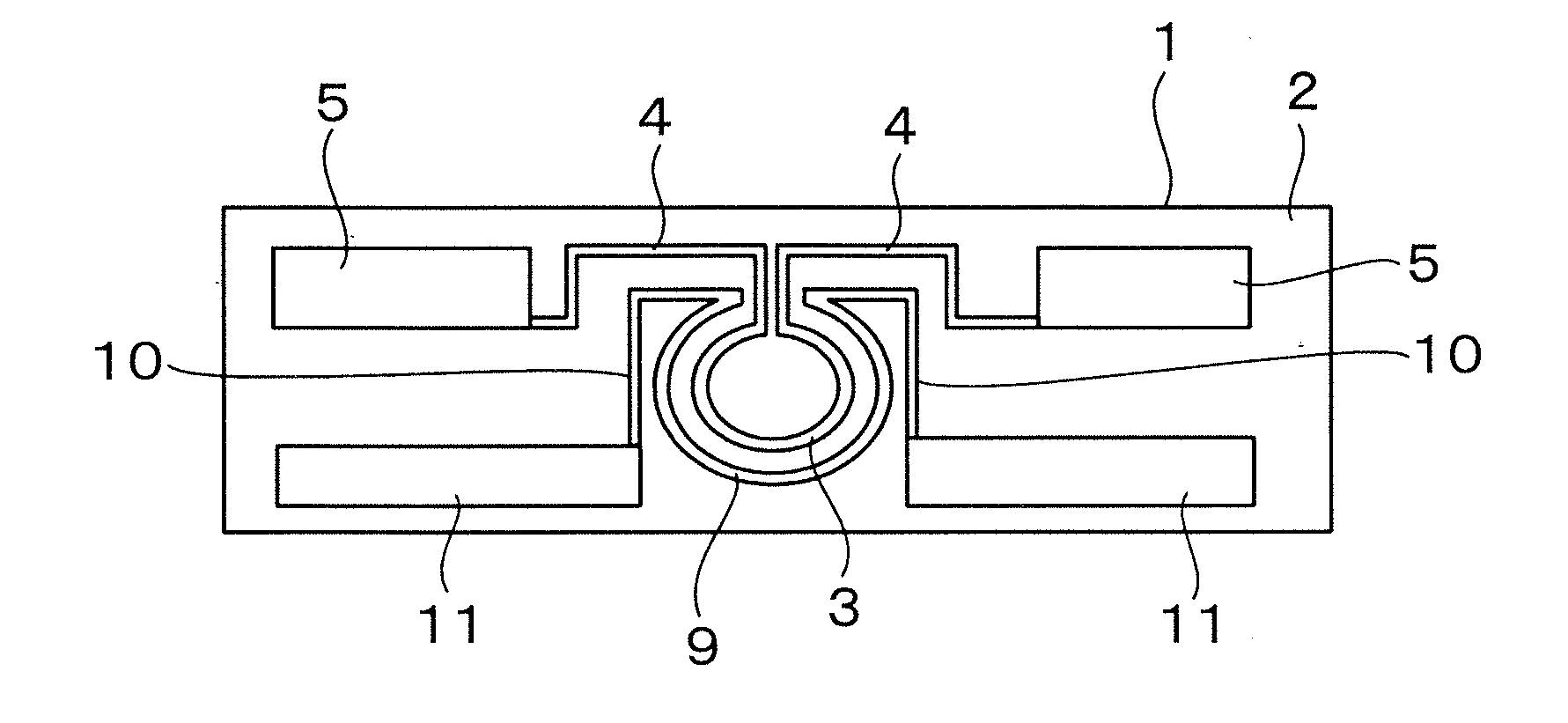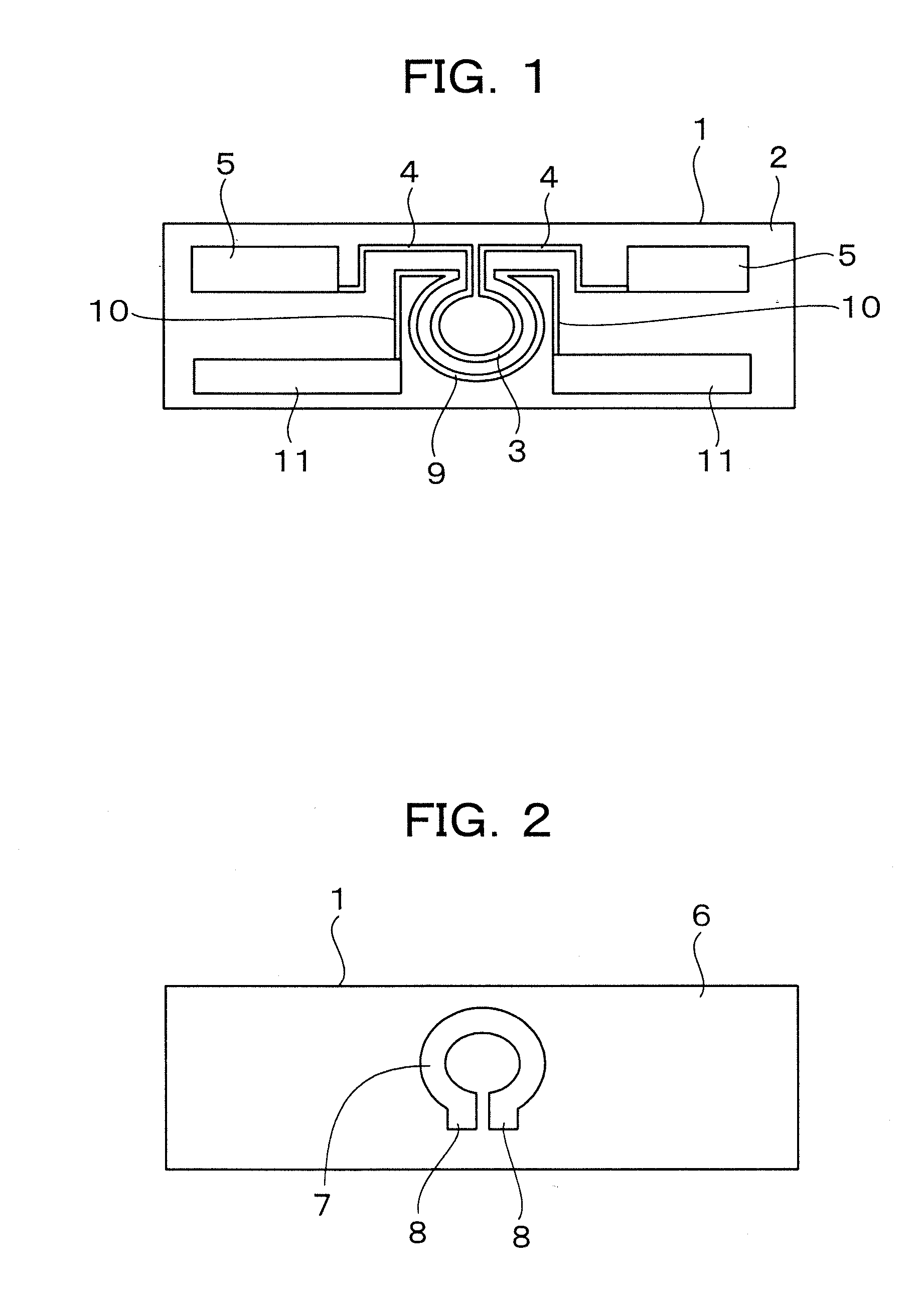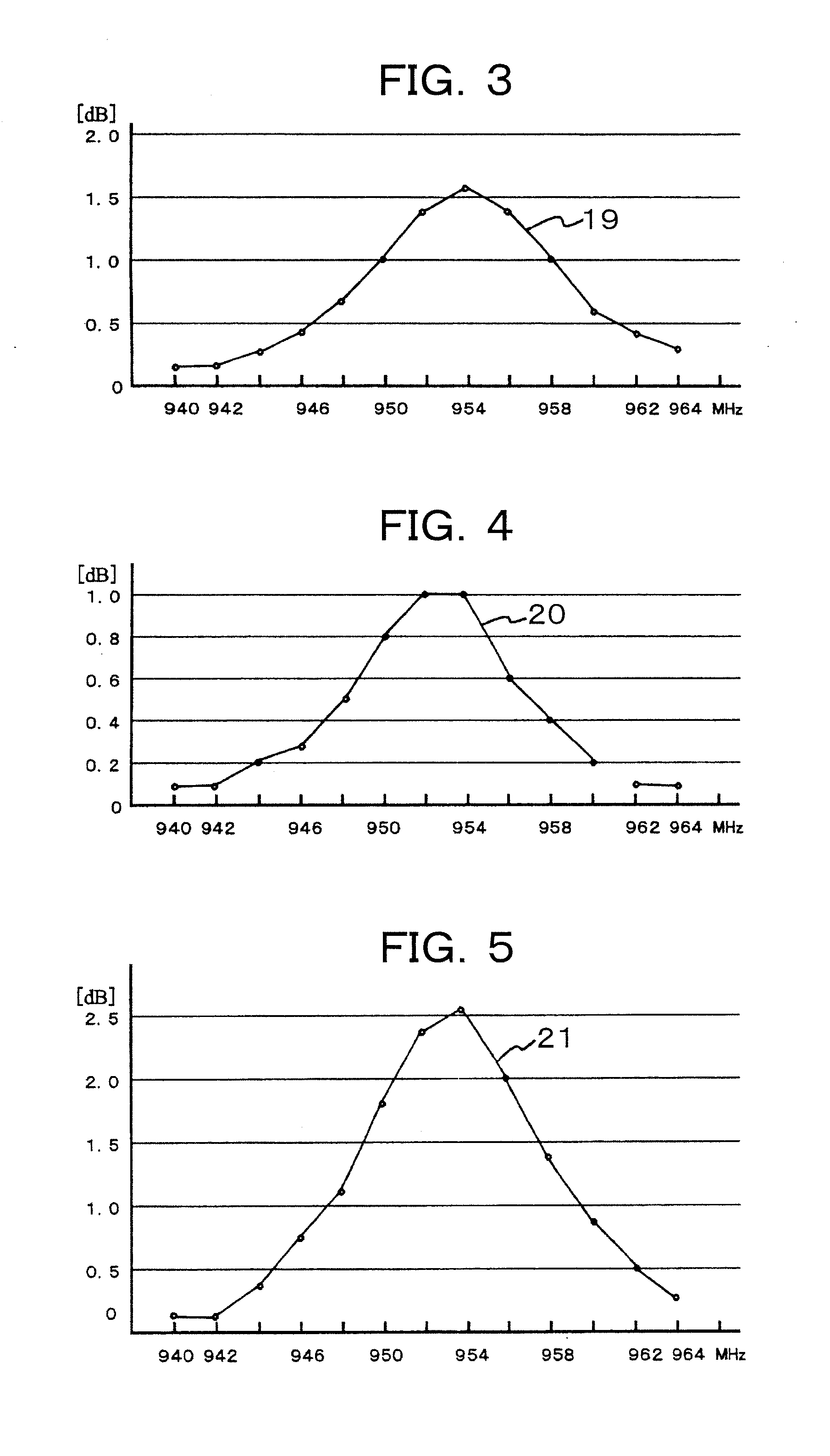Substrate Type Antenna
a substrate type, antenna technology, applied in antennas, antenna feed intermediates, electrical devices, etc., can solve the problems of increasing the complexity of the configuration, and achieve the effect of simple configuration, high gain enhancement, and high band enhancemen
- Summary
- Abstract
- Description
- Claims
- Application Information
AI Technical Summary
Benefits of technology
Problems solved by technology
Method used
Image
Examples
Embodiment Construction
Preferred embodiments of the present invention will be explained hereinafter based on the accompanying drawings.
FIGS. 1 and 2 are respectively plan views showing upper and lower surfaces of a substrate type antenna according to one embodiment of the present invention.
A loop-like first coupling-part or joint pattern 3, one spot of which is divided as shown in FIG. 1, is formed in an upper surface 2 corresponding to one substrate surface of a substrate 1 comprised of a dielectric material. Dipole antennas 5 are respectively connected to both end terminals of the first joint pattern 3 at a position where the first joint pattern 3 is divided, through electric paths 4. A loop-like second joint pattern 7, one spot of which being divided, is formed in a lower surface 6 corresponding to the other substrate surface of the substrate 1 shown in FIG. 2. Feeding points 8 are formed at their corresponding divided ends of the second joint pattern 7.
A loop-like third joint pattern 9 whose one spot ...
PUM
 Login to View More
Login to View More Abstract
Description
Claims
Application Information
 Login to View More
Login to View More - R&D
- Intellectual Property
- Life Sciences
- Materials
- Tech Scout
- Unparalleled Data Quality
- Higher Quality Content
- 60% Fewer Hallucinations
Browse by: Latest US Patents, China's latest patents, Technical Efficacy Thesaurus, Application Domain, Technology Topic, Popular Technical Reports.
© 2025 PatSnap. All rights reserved.Legal|Privacy policy|Modern Slavery Act Transparency Statement|Sitemap|About US| Contact US: help@patsnap.com



